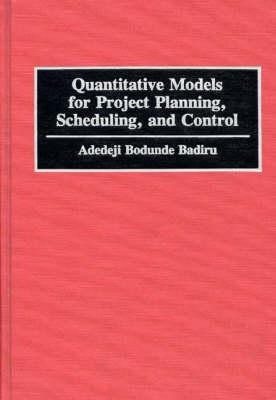| Quantitative Models for Project Planning, Scheduling, and Control Contributor(s): Badiru, Adedeji Bodunde (Author) |
|
 |
ISBN: 0899307302 ISBN-13: 9780899307305 Publisher: Praeger OUR PRICE: $94.05 Product Type: Hardcover - Other Formats Published: April 1993 |
| Additional Information |
| BISAC Categories: - Business & Economics | Project Management - Business & Economics | Business Mathematics - Business & Economics | Management - General |
| Dewey: 658.404 |
| LCCN: 92034377 |
| Lexile Measure: 1240 |
| Physical Information: 0.88" H x 6.14" W x 9.21" (1.54 lbs) 376 pages |
| Descriptions, Reviews, Etc. |
| Publisher Description: Today, a major component of any project management effort is the combined use of qualitative and quantitative tools. While publications on qualitative approaches to project management are widely available, few project management books have focused on the quantitative approaches. This book represents the first major project management book with a practical focus on the quantitative approaches to project management. The book organizes quantitative techniques into an integrated framework for project planning, scheduling, and control. Numerous illustrative examples are presented. Topics covered in the book include PERT/CPM/PDM and extensions, mathematical project scheduling, heuristic project scheduling, project economics, statistical data analysis for project planning, computer simulation, assignment and transportation problems, and learning curve analysis. Chapter one gives a brief overview of project management, presenting a general-purpose project management model. Chapter two covers CPM, PERT, and PDM network techniques. Chapter three covers project scheduling subject to resource constraints. Chapter four covers project optimization. Chapter five discusses economic analysis for project planning and control. Chapter six discusses learning curve analysis. Chapter seven covers statistical data analysis for project planning and control. Chapter eight presents techniques for project analysis and selection. Tables and figures are used throughout the book to enhance the effectiveness of the discussions. This book is excellent as a textbook for upper-level undergraduate and graduate courses in Industrial Engineering, Engineering Management, and Business, and as a detailed, comprehensive guide for corporate management. |